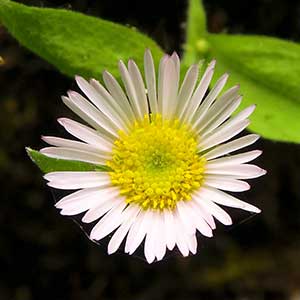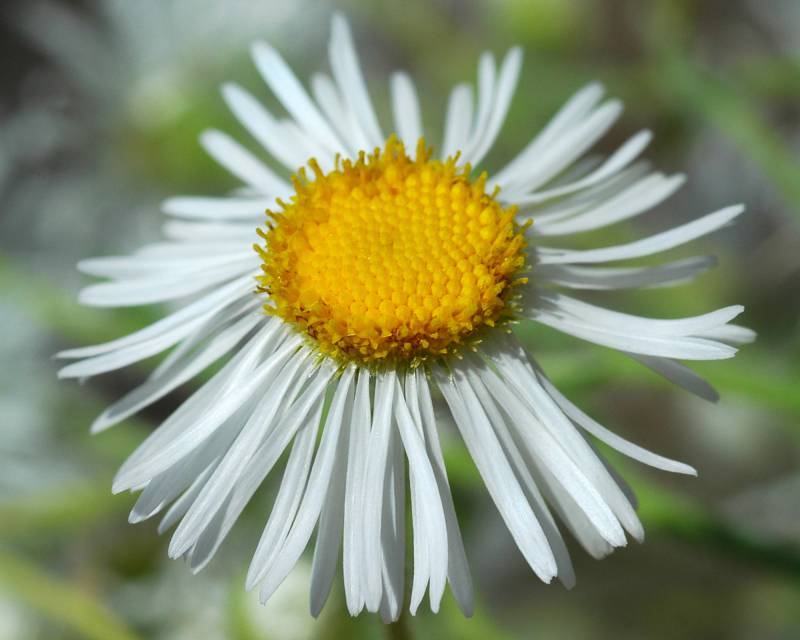|
Gorge fleabane, Oregon fleabane
|
shaggy fleabane
|
| Perennial from a stout, woody base and root, the lax stem 5-15 cm. long, covered with glands and loose, sticky hairs. |
Perennial from a woody base and taproot, the stem 5-50 cm. tall, the herbage copiously spreading-hairy. |
Basal leaves tufted, spatulate to obovate, coarsely toothed or incised, up to 9 cm. long and 2.5 cm. wide; cauline leaves well developed, broadly lanceolate to ovate or elliptic, up to 4 cm. long and 1 cm. wide. |
Leaves basal and cauline, oblanceolate to linear-oblanceolate, up to 8 cm. long and 8 mm. wide. |
Heads 1-several in a leafy inflorescence, the disk 9-13 mm. wide; involucre 5-7 mm. high, the bracts loose, equal, thin and green; rays 30-60, pink or white to bluish; disk corollas 3.4-4.7 mm. long, yellow; pappus simple, of 15-20 bristles that are curled and twisted above. |
Heads several, the disk 7-15 mm. wide; involucre 4-7 mm. high, the bracts narrow, spreading-hairy; rays 50-100, 0.7-1.5 mm. wide, usually white, occasionally pale blue or pink; disk corollas 3.5-5 mm. long, slender, yellow but paler below; pappus of capillary bristles, with an outer row of shorter bristles. |
|
Achenes slightly hairy. |
|
|
|
|
| May-September |
May-July |
| Moist shady cliffs and ledges. |
Open places in the foothills, valleys and plains, often among sagebrush. |
Occurring in the Columbia River Gorge in Washington; Columbia River Gorge in Washington to adjacent Gorge area in Oregon.
|
Occurring east of the Cascades crest in Washington; British Columbia to California, east to the Great Plains.
|
| Native |
Native |
| Threatened in Washington (WANHP) |
Not of concern |
E. acris, E. aliceae, E. annuus, E. aureus, E. basalticus, E. bloomeri, E. caespitosus, E. chrysopsidis, E. compositus, E. corymbosus, E. davisii, E. disparipilus, E. divergens, E. eatonii, E. elatus, E. filifolius, E. flettii, E. glacialis, E. howellii, E. inornatus, E. karvinskianus, E. leibergii, E. linearis, E. lonchophyllus, E. nivalis, E. peregrinus, E. philadelphicus, E. piperianus, E. poliospermus, E. pumilus, E. salishii, E. speciosus, E. strigosus, E. subtrinervis |
E. acris, E. aliceae, E. annuus, E. aureus, E. basalticus, E. bloomeri, E. caespitosus, E. chrysopsidis, E. compositus, E. corymbosus, E. davisii, E. disparipilus, E. divergens, E. eatonii, E. elatus, E. filifolius, E. flettii, E. glacialis, E. howellii, E. inornatus, E. karvinskianus, E. leibergii, E. linearis, E. lonchophyllus, E. nivalis, E. oreganus, E. peregrinus, E. philadelphicus, E. piperianus, E. poliospermus, E. salishii, E. speciosus, E. strigosus, E. subtrinervis |
|
|
| |



